1. Major functionality
1.1. Purchasing
1.1.1. Requisitions
1.1.1.1. Sources
1.1.1.1.1. MRP/ASCP planned orders
1.1.1.1.2. Inventory Replenishment
1.1.1.1.3. Order Management/Dropship
1.1.1.1.4. Work-in-Process/Outside Processing
1.1.1.2. types
1.1.1.2.1. Purchase/Standard
1.1.1.2.2. Internal
1.1.1.3. templates
1.1.2. Purchase Orders
1.1.2.1. types
1.1.2.1.1. Standard
1.1.2.1.2. Contract
1.1.2.1.3. Blanket
1.1.2.1.4. Planned
1.1.2.1.5. Global
1.1.2.2. approve, control
1.1.2.3. communicate
1.1.2.3.1. Print&Mail
1.1.2.3.2. Fax
1.1.2.3.3. eMail
1.1.2.3.4. EDI/XML
1.1.3. Supplier
1.1.3.1. Standard
1.1.3.1.1. Vendor
1.1.3.1.2. Vendor Sites
1.1.3.2. iSupplier
1.1.4. Approval Hierarchy
1.1.5. Buyer's Workbench
1.2. Inventory
1.2.1. Receiving
1.2.1.1. Direct
1.2.1.2. Standard
1.2.1.3. Inspection
1.2.1.4. Expense
1.2.1.4.1. Period Expense Accruals
1.2.1.5. Unordered
1.2.2. Transactions
1.2.2.1. Transfer
1.2.2.1.1. Subinventory
1.2.2.1.2. Interorg
1.2.2.2. Issue
1.2.2.2.1. shipment
1.2.2.2.2. miscelaneous
1.2.3. Replenishment
1.2.3.1. MinMax
1.2.3.2. Reorder Point
1.2.3.3. Kanban
1.2.4. Control levels
1.2.4.1. Revision
1.2.4.2. Serial Number
1.2.4.3. Lot Number
1.2.4.4. Locator Based
1.2.5. Intercompany Flows
1.2.6. Items
1.2.6.1. types
1.2.6.1.1. Finished Goods
1.2.6.1.2. Raw Materials
1.2.6.1.3. Spare Parts
1.2.6.1.4. Services
1.2.6.1.5. Sub-Assemblies
1.2.6.1.6. Containers/Truck
1.2.6.2. Categories
1.2.6.2.1. Purchasing Item Categories
1.2.6.3. Material Status
1.2.6.4. Lifecycle
1.2.6.4.1. prototype
1.2.6.4.2. released /rampup
1.2.6.4.3. production /live
1.2.6.4.4. discontinued/ rampdown
1.2.6.4.5. obsolete
1.2.6.5. Attribute Groups
1.2.6.5.1. Main
1.2.6.5.2. Inventory
1.2.6.5.3. BOM
1.2.6.5.4. Costing
1.2.6.5.5. Asset Management
1.2.6.5.6. Purchasing
1.2.6.5.7. Planning
1.2.6.5.8. Manufacturing
1.2.6.5.9. Order Management
1.2.6.5.10. Service
1.2.6.5.11. Invoicing
1.2.6.5.12. Web
1.2.7. Organizations
1.2.7.1. Classification
1.2.7.2. Subinventories
1.2.7.3. Locators
1.3. Advanced Pricing
1.3.1. Price lists
1.4. Accounts Payables
1.4.1. Transactions, Adjustments, Memos
1.4.1.1. Matching
1.4.1.2. Pay on Receipt
1.4.2. Payments
1.5. Cash Management
1.5.1. Bank Statements
1.5.1.1. Reconcile
1.5.2. Miscellaneous Transactions
2. Technical Niche
2.1. System Admin
2.1.1. Profile Options
2.1.2. Application Short name
2.1.3. Concurrent programs
2.1.4. Responsibilties
2.1.5. Securing Attributes
2.1.6. Workflows
2.1.7. Tables
2.1.8. Standard reports
2.1.8.1. Supplier Report
2.1.8.2. Supplier Audit Report
2.1.8.3. Supplier Payment History Report
2.1.8.4. Supplier Paid Invoice History Report
2.1.8.5. Supplier Mailing Labels Report
2.1.8.6. Purchase Order Header Report
2.1.8.7. Supplier Merge Report
2.1.8.8. Supplier Customer Netting Report
2.1.8.9. Supplier Open balance Report
2.1.8.10. Invalid PO Supplier Notice Report
2.1.8.11. Accounts Payables Trial Balance Report
2.1.8.12. Invoice Aging Report
2.1.8.13. Open Items Revalutation Report
2.2. Trading Community Architecture (TCA)
2.3. Purchasing Document Open Interface
2.4. Requisition Import Interface
2.5. Receiving Transaction Interface
2.6. AP open interface
2.7. Cross-docking
2.8. XML gateway/EDI Gateway
3. Minor functionality
3.1. Internet Expenses
3.2. Human Resources
3.3. iSupplier
3.4. iProcurement
3.5. Sourcing
3.5.1. RFQ
3.5.2. Quotations
3.6. ebTAX
3.7. Project Accounting
3.8. Encumbrances
3.9. Advance Intercompany Accounting (AGIS)
3.10. Oracle Quality
3.11. Endeca Extensions
3.12. Supplier Network
4. Adjacent Areas
4.1. General Ledger
4.1.1. Ledger Sets
4.1.1.1. SLA
4.2. Order Management
4.2.1. Dropship
4.2.2. Back-to-Back
4.2.3. Internal Requisition/Sales Order
4.3. Payments/iPayment
4.3.1. Paymentech
4.4. Bills of Materials
4.4.1. Outside Processing
4.5. Manufacturing
4.5.1. Discrete Mfg (WIP)
4.5.1.1. Outside Processing
4.5.2. Oracle Process Manufacturing (OPM)
4.6. Services&Contracts
4.7. Receivables
4.7.1. AR/AP netting

